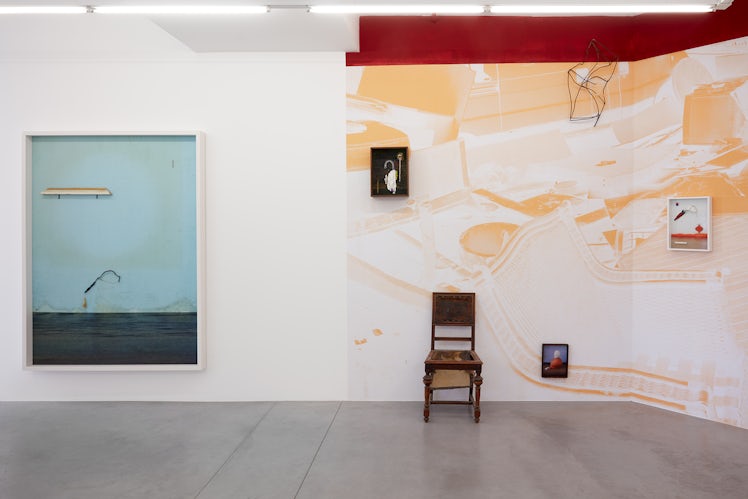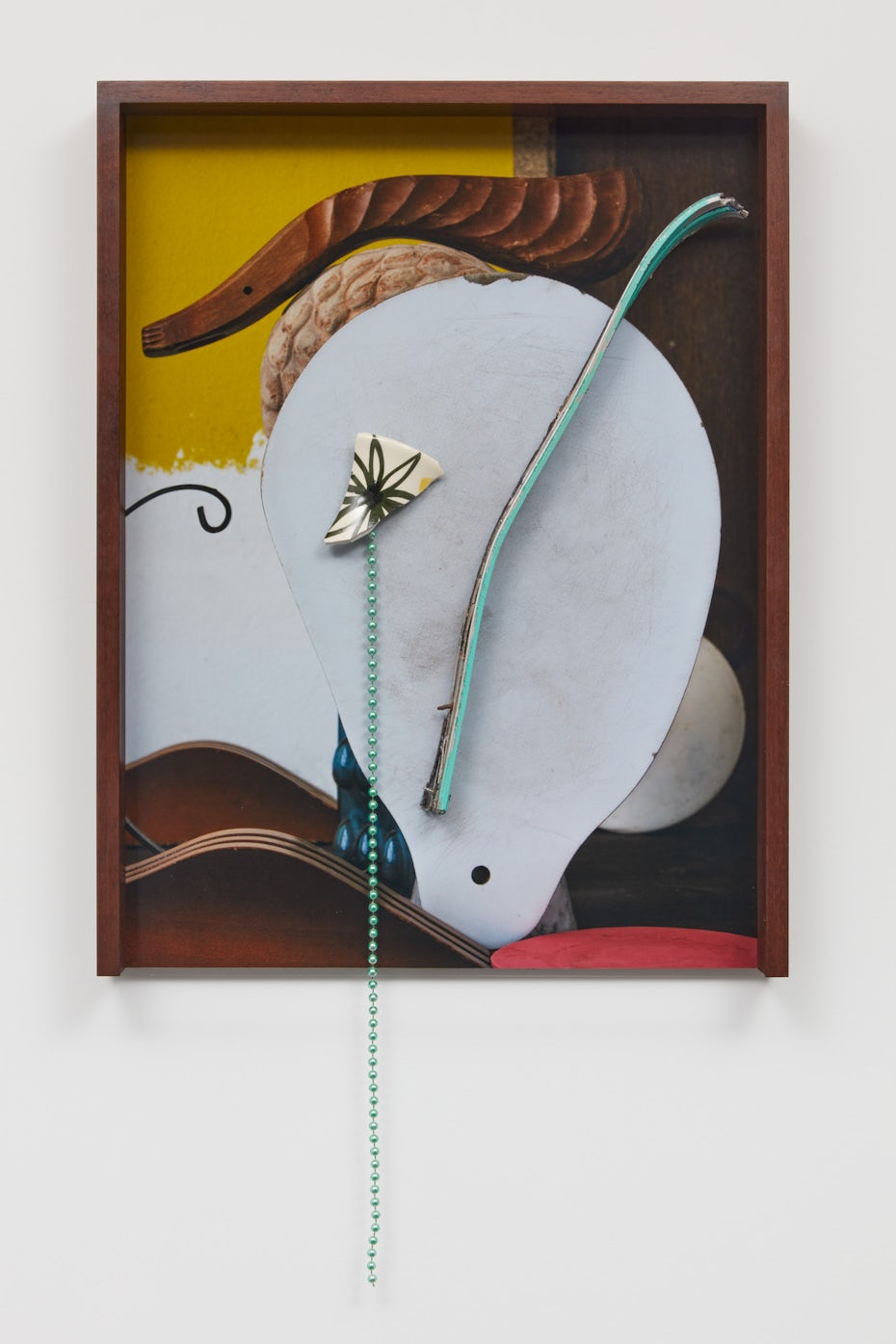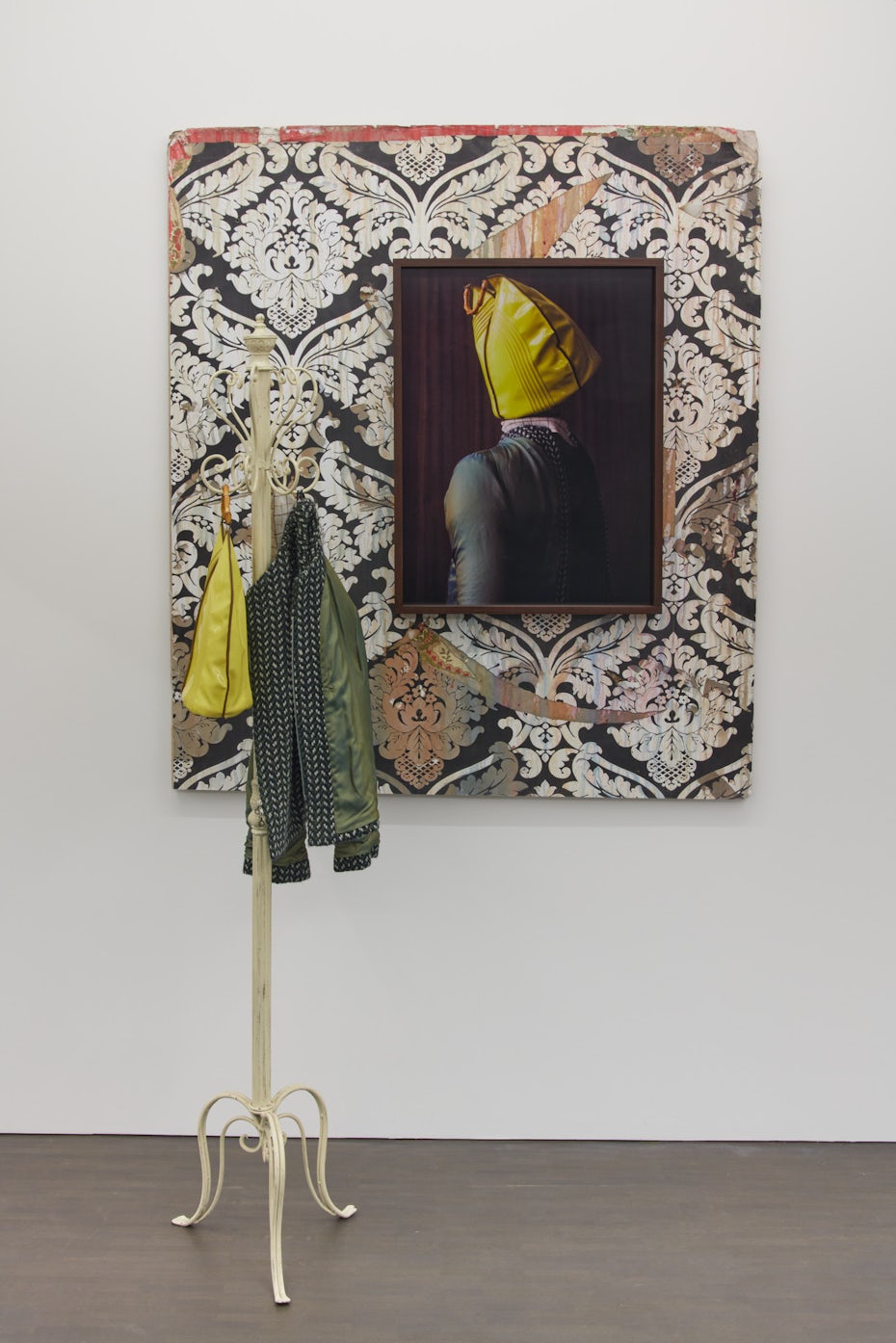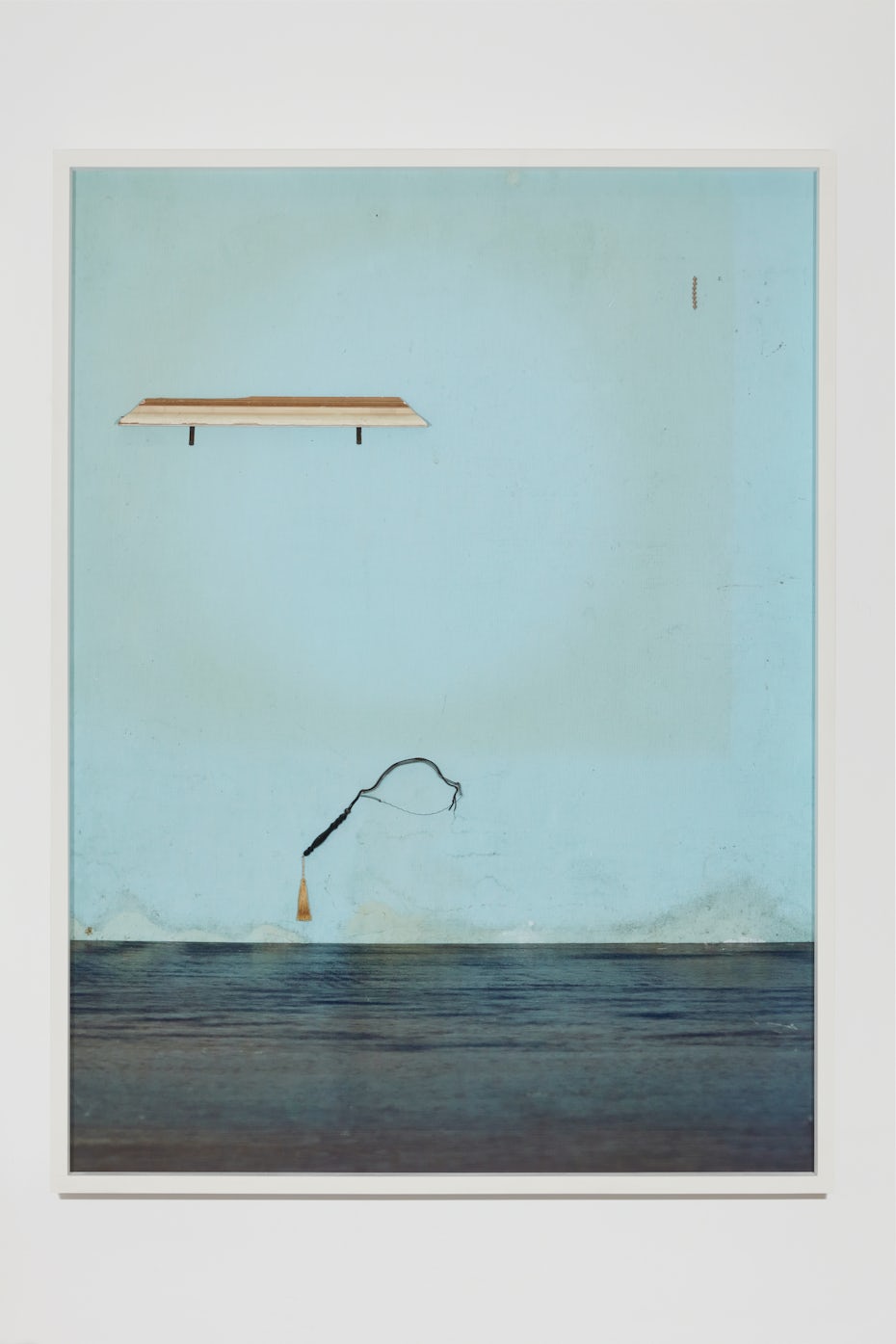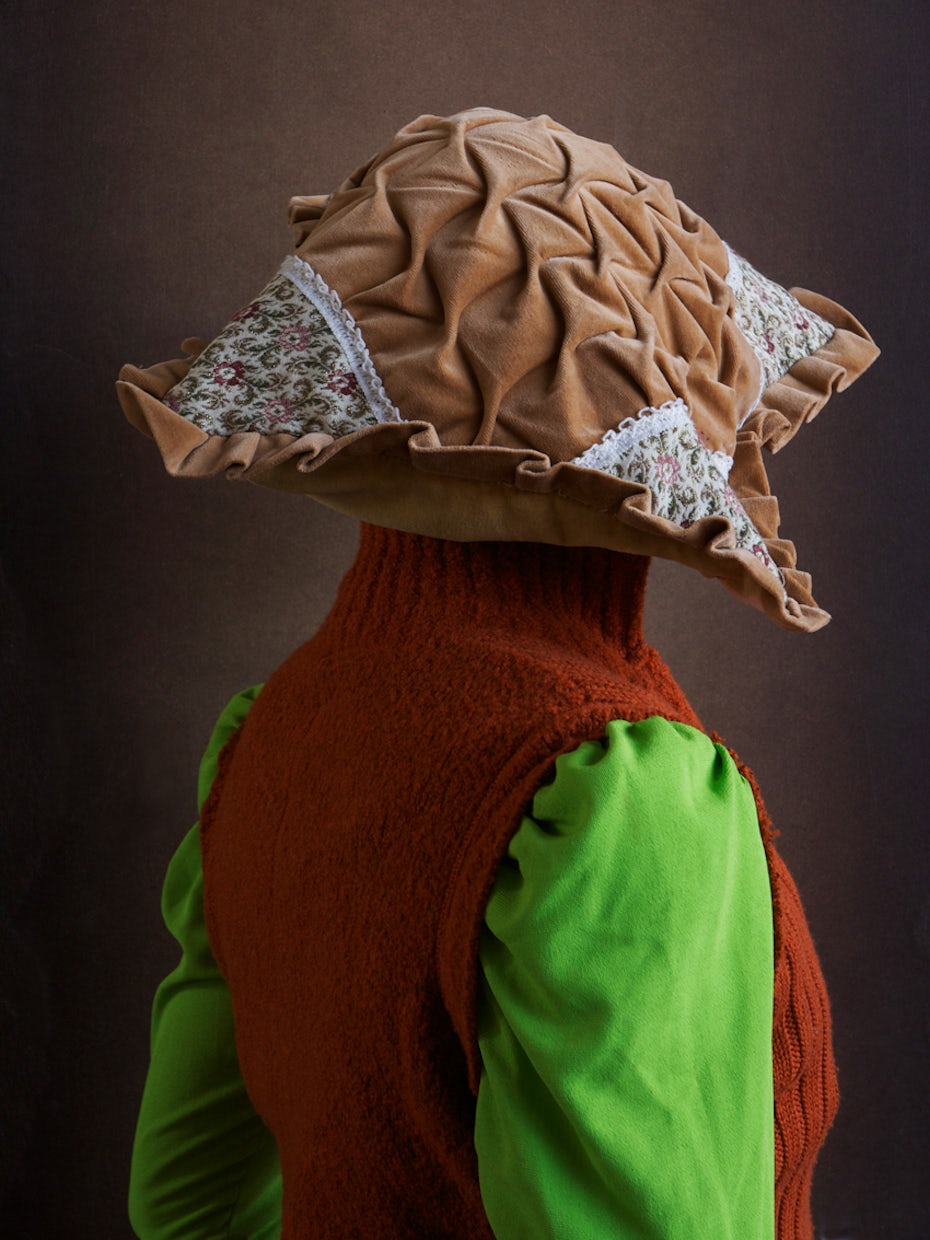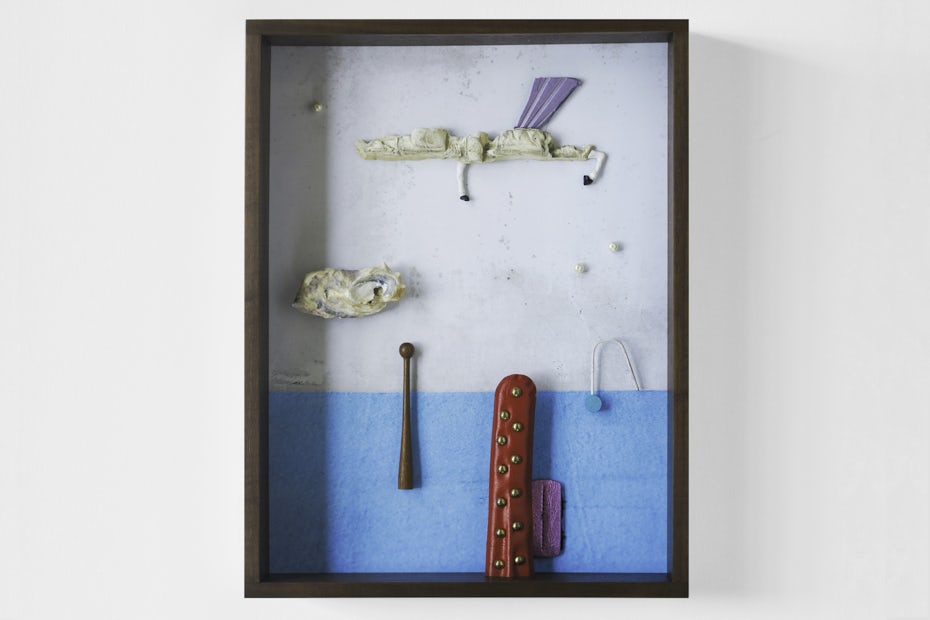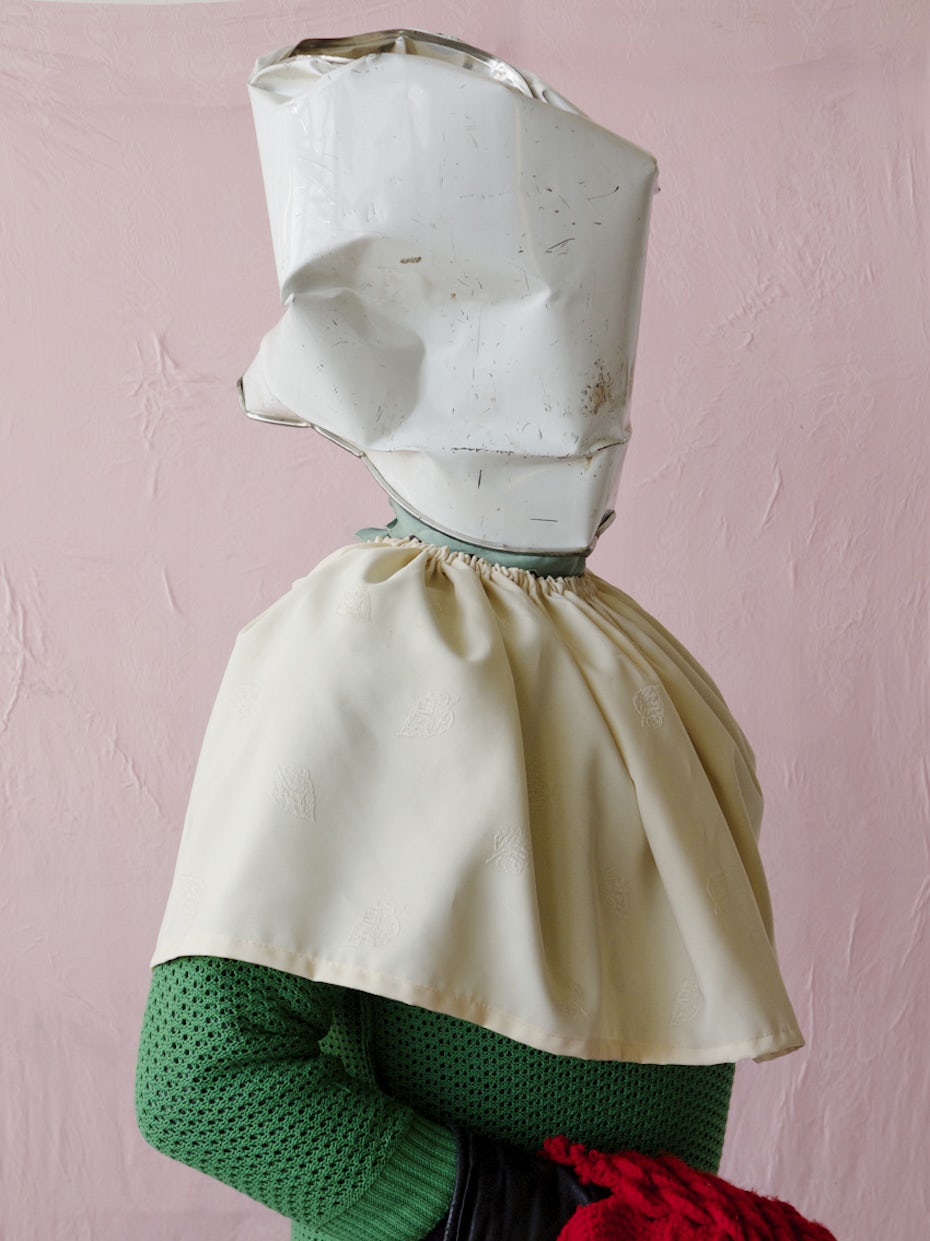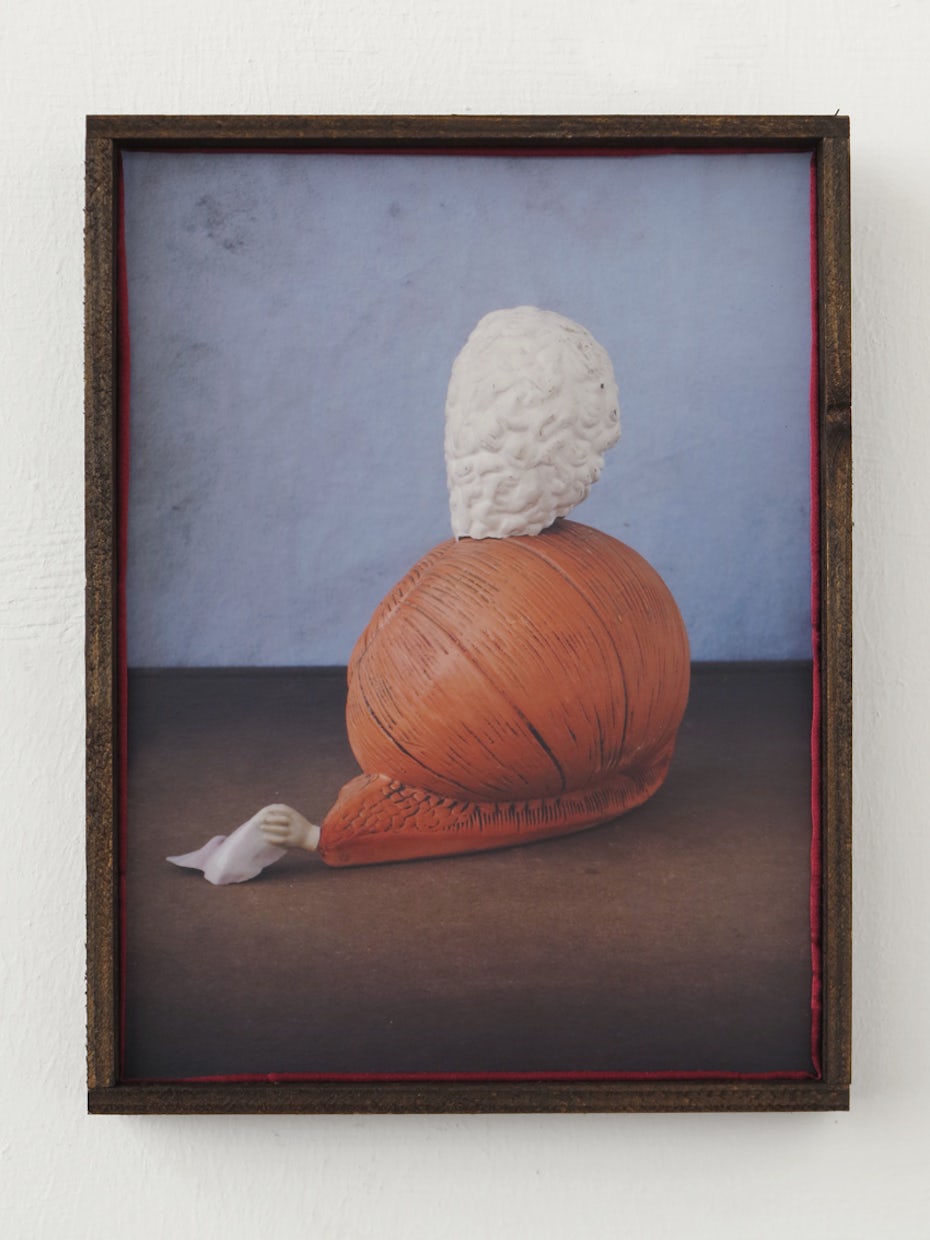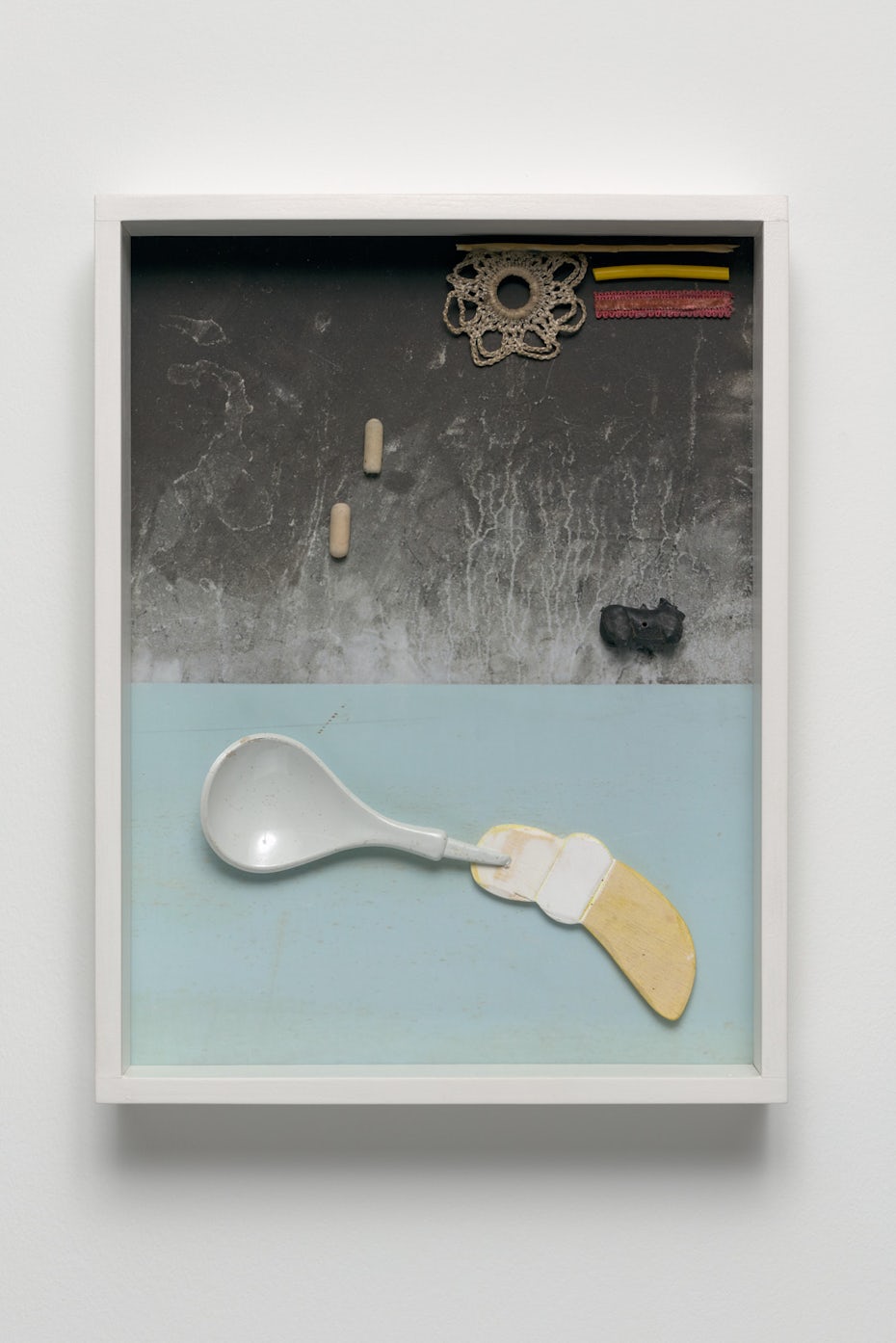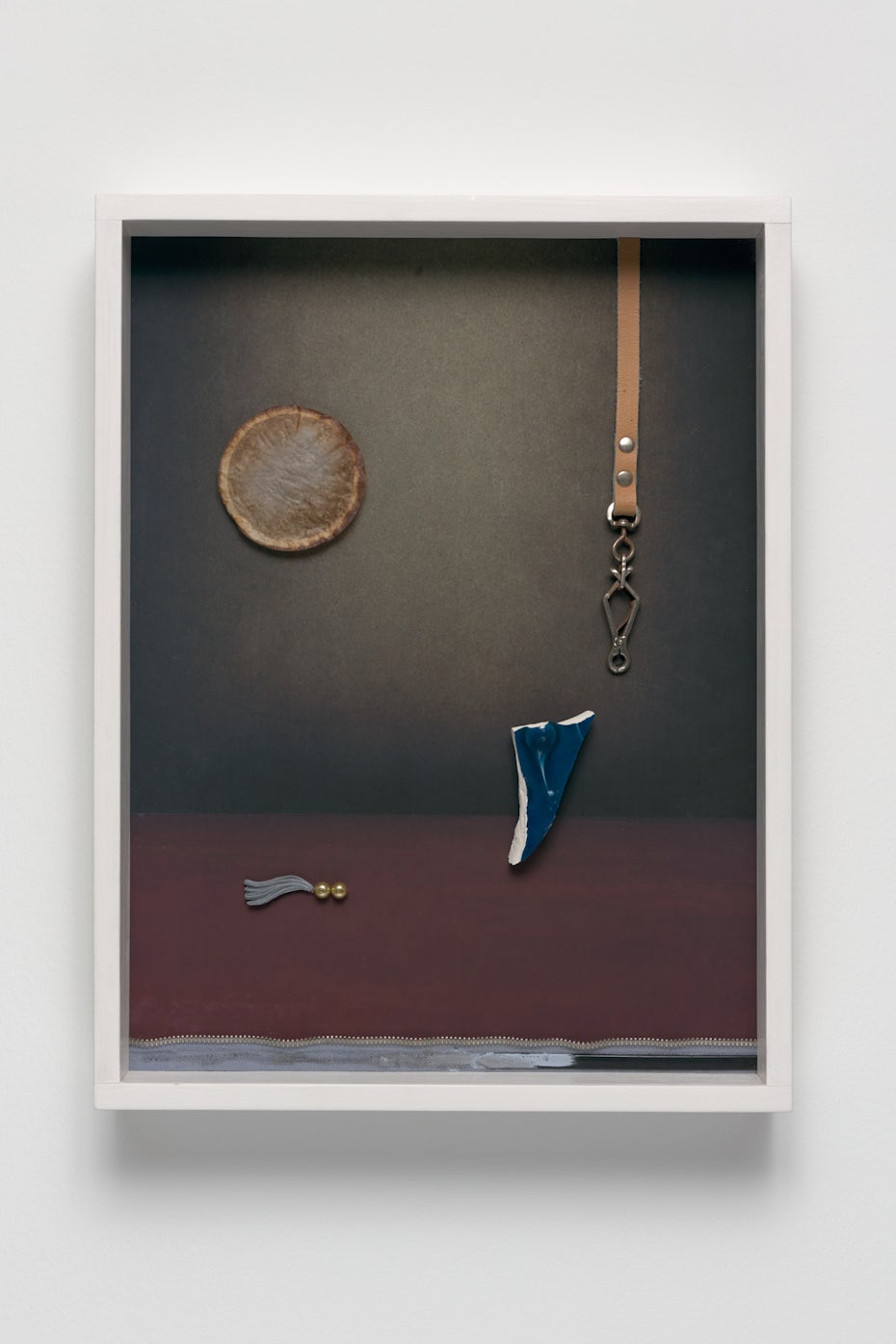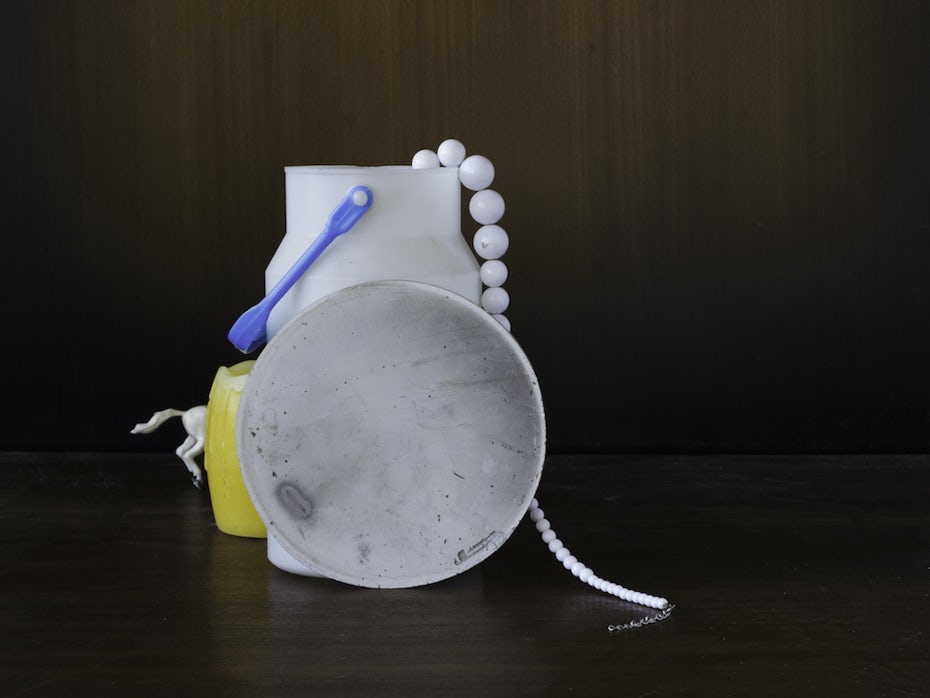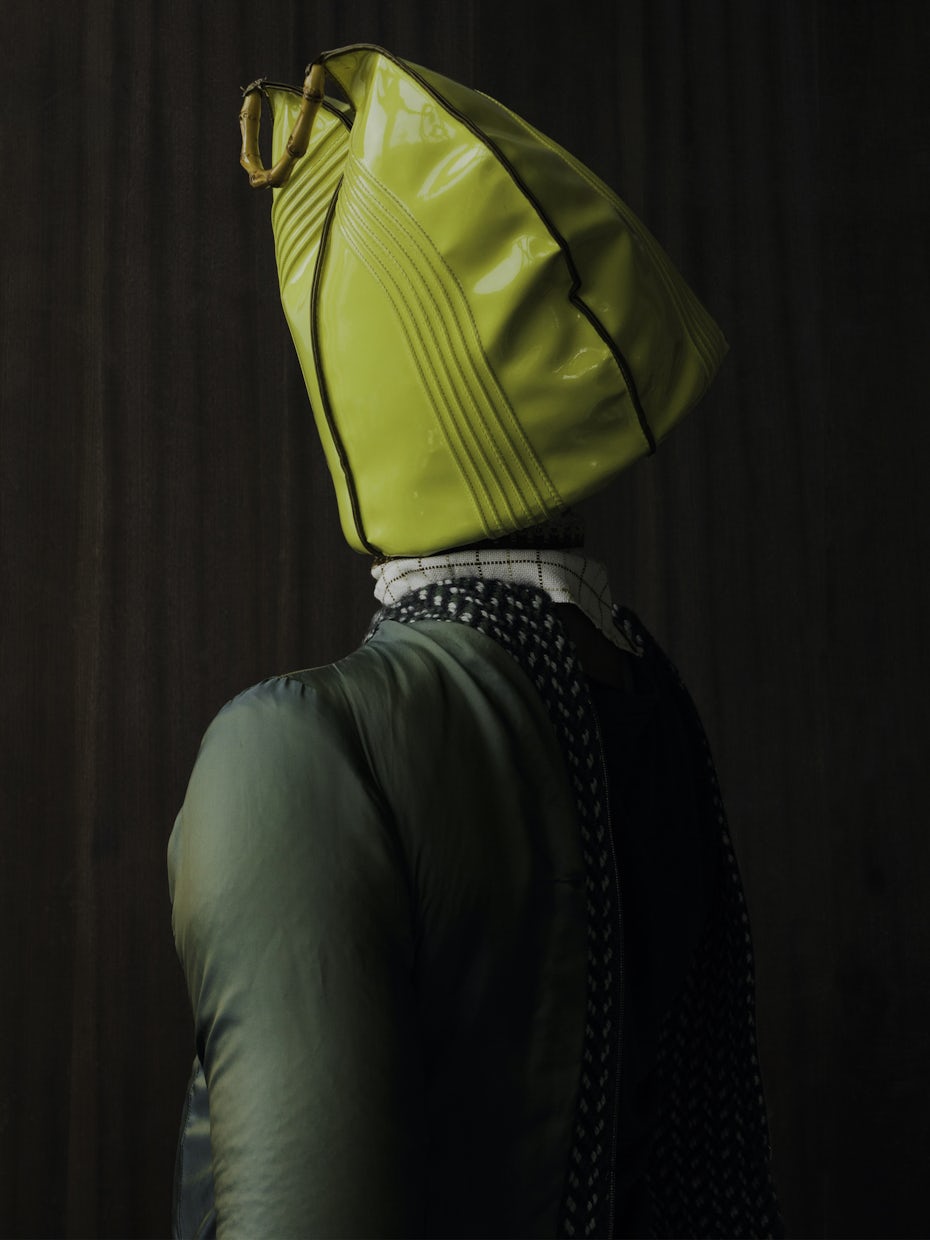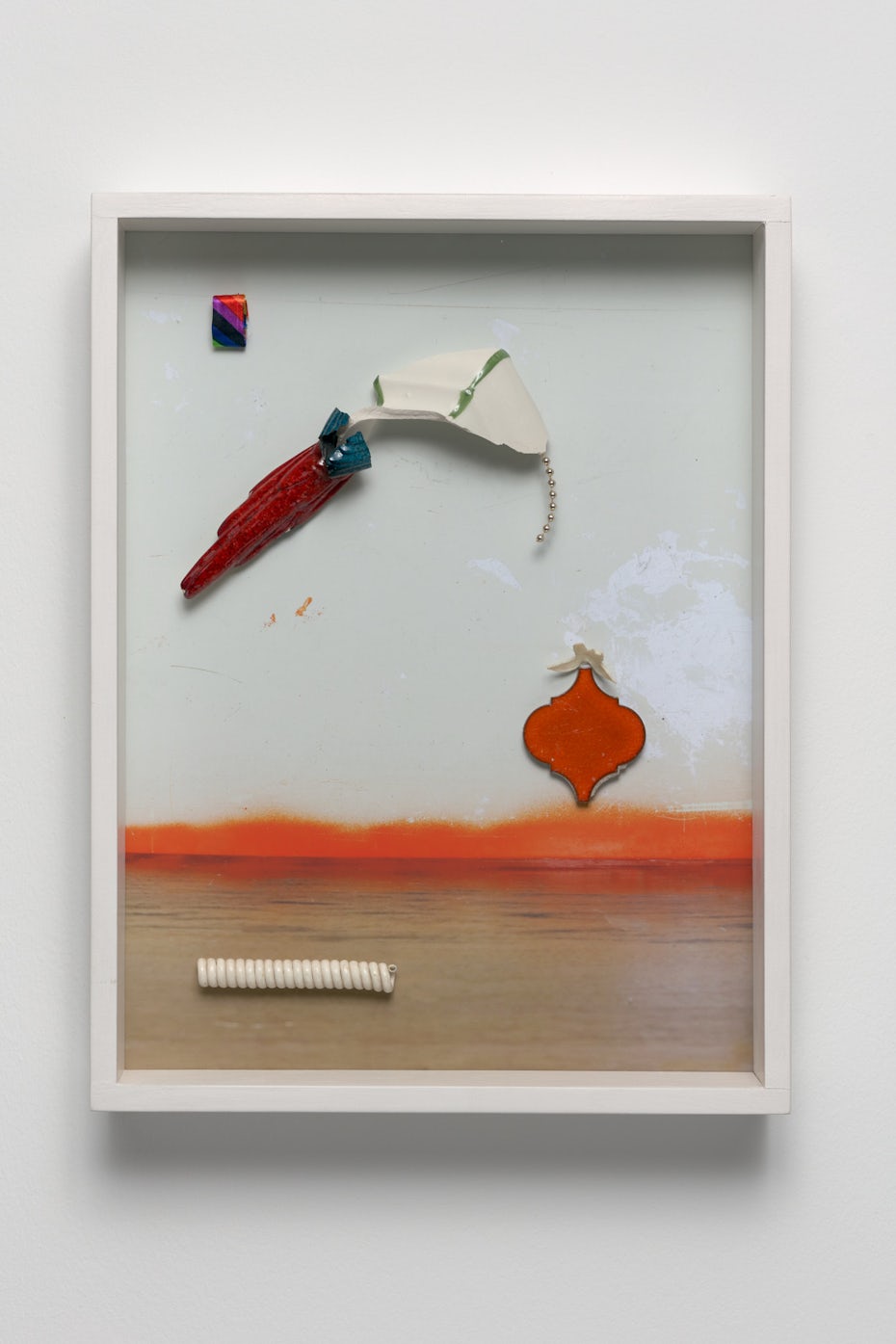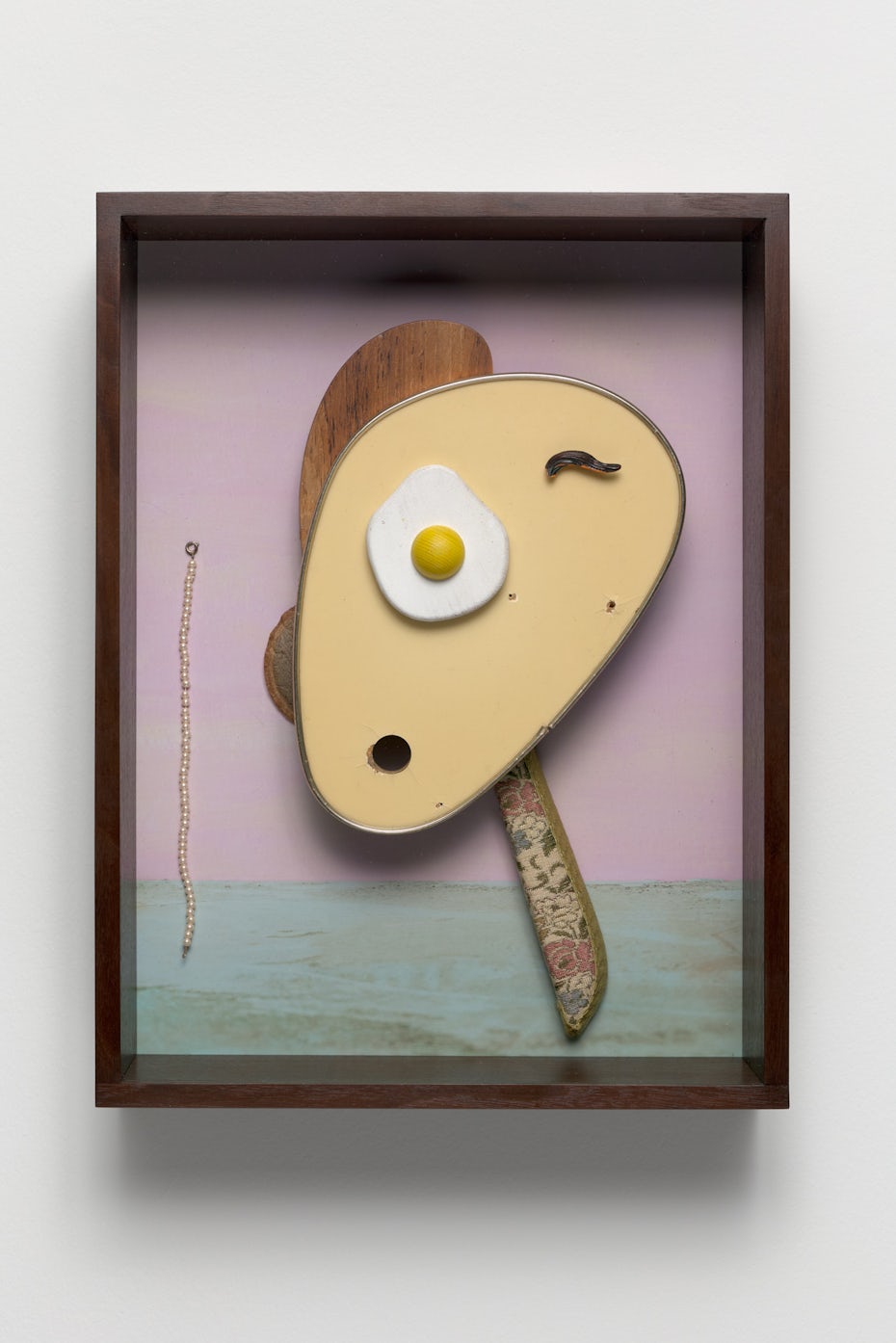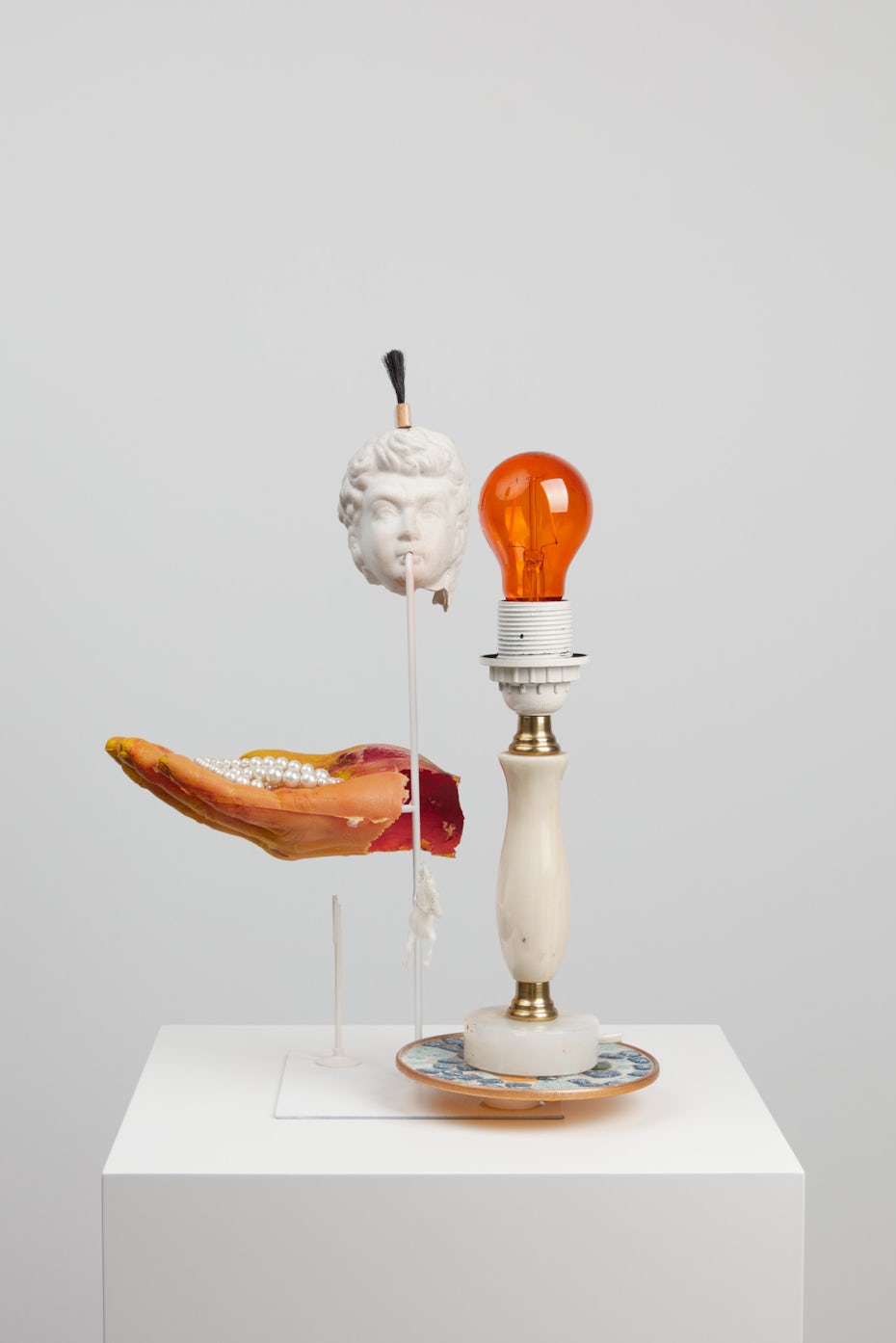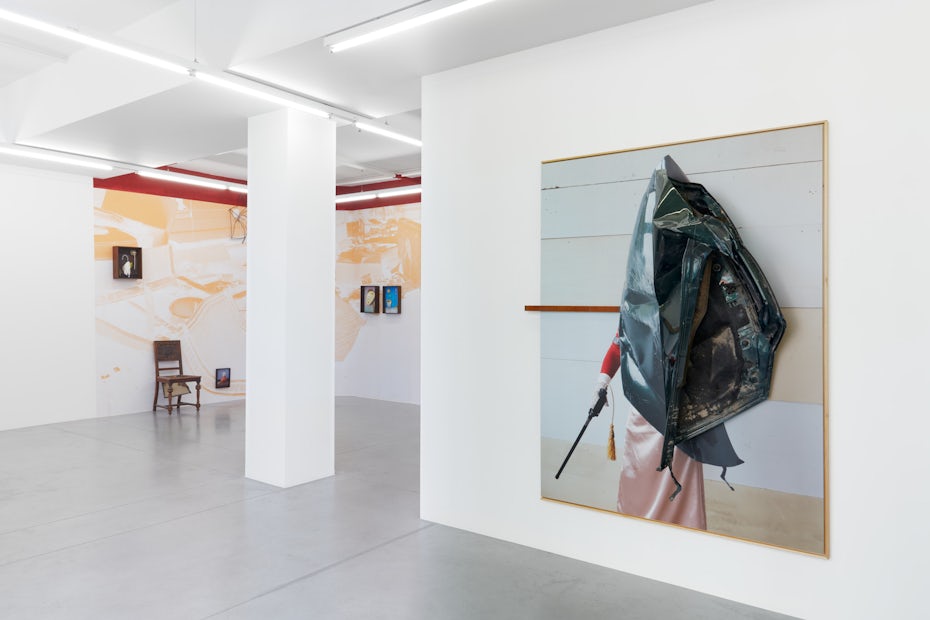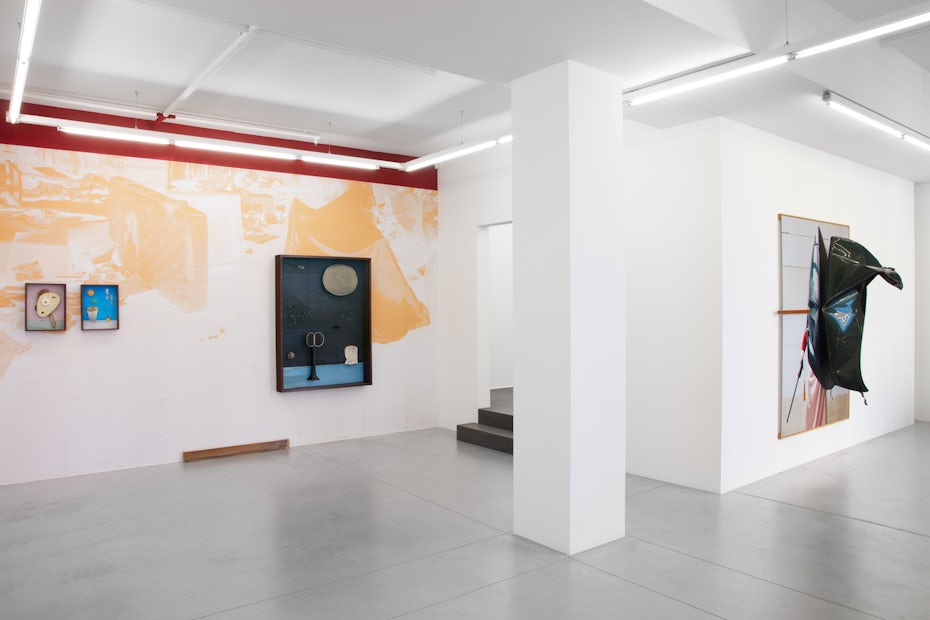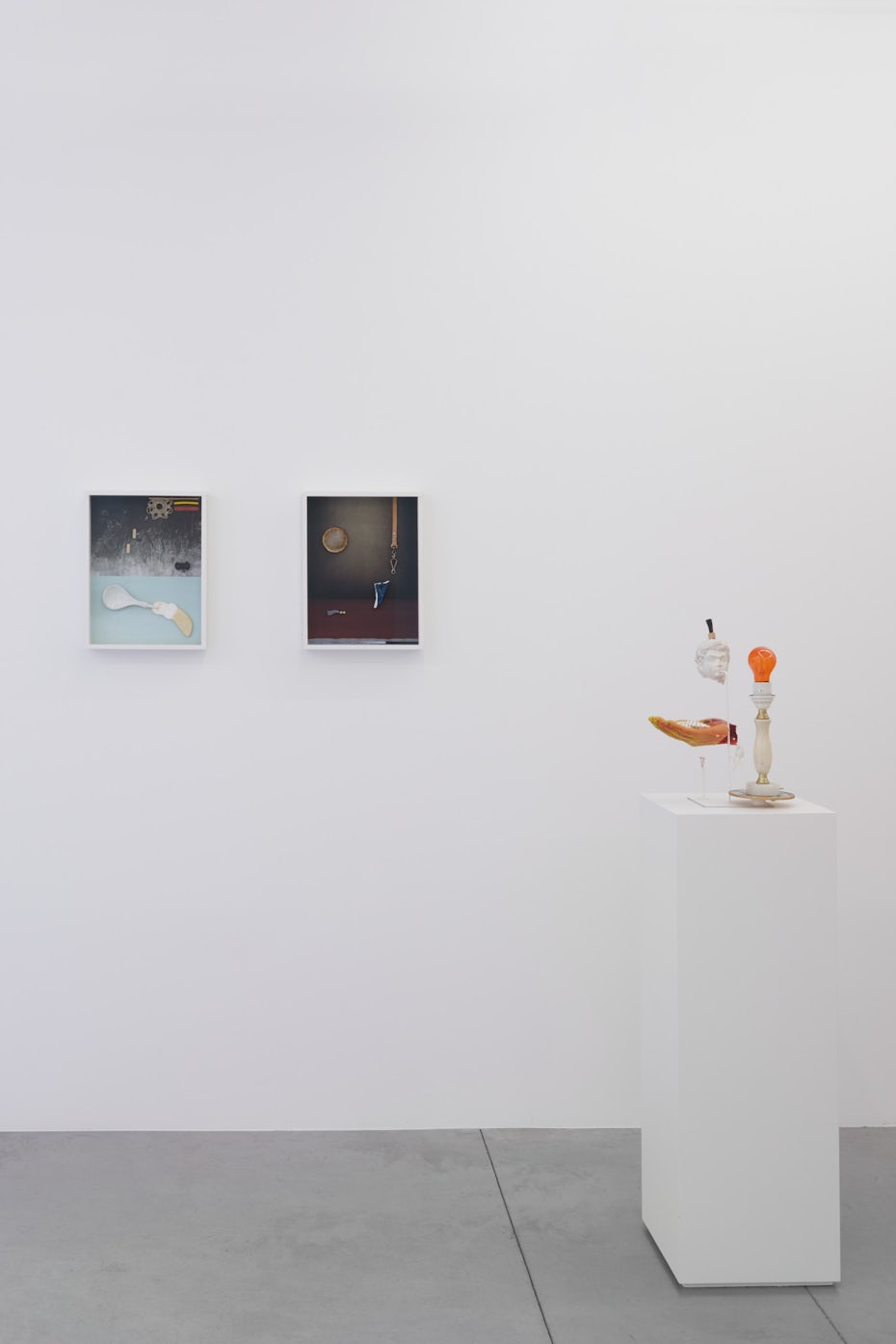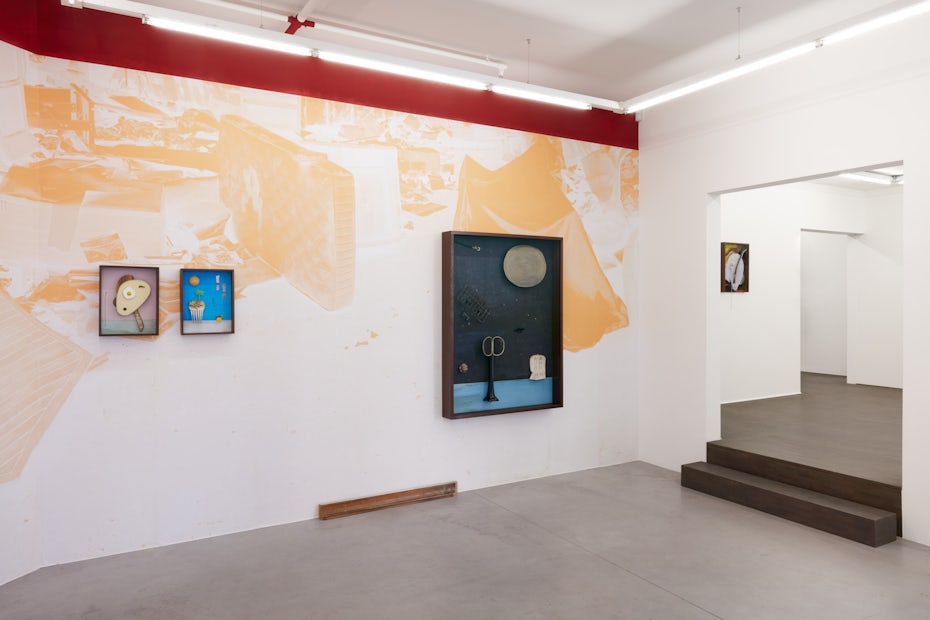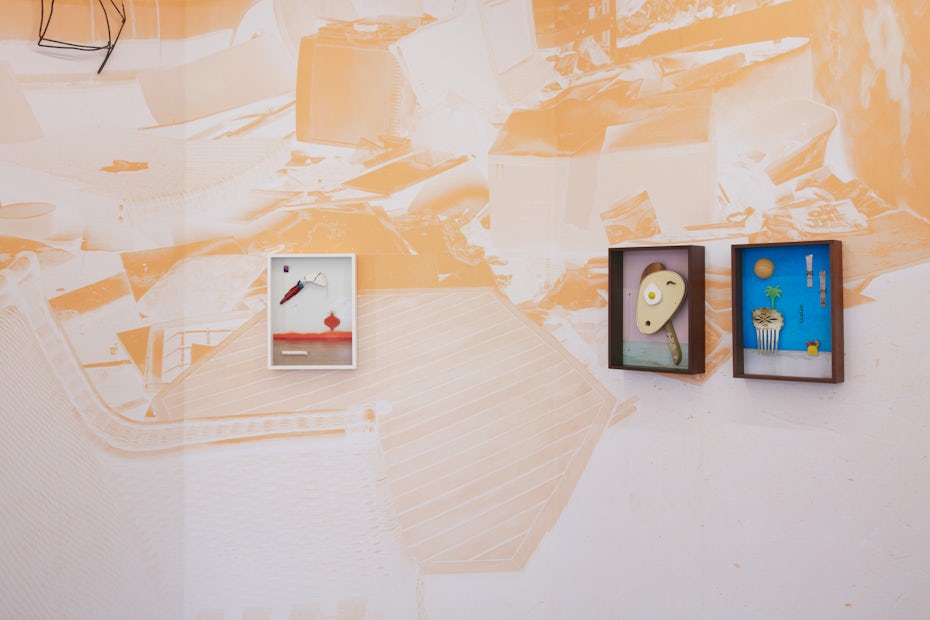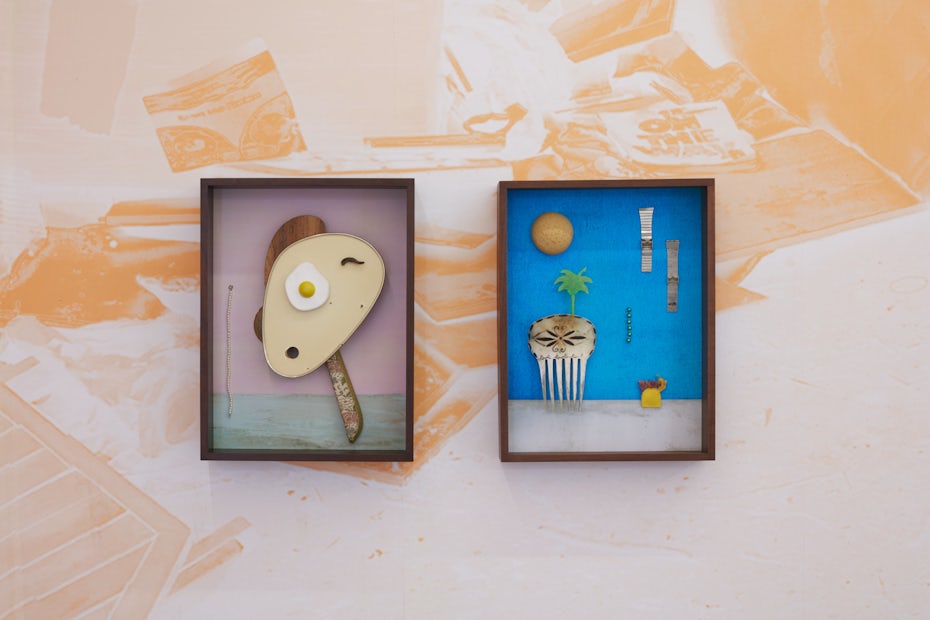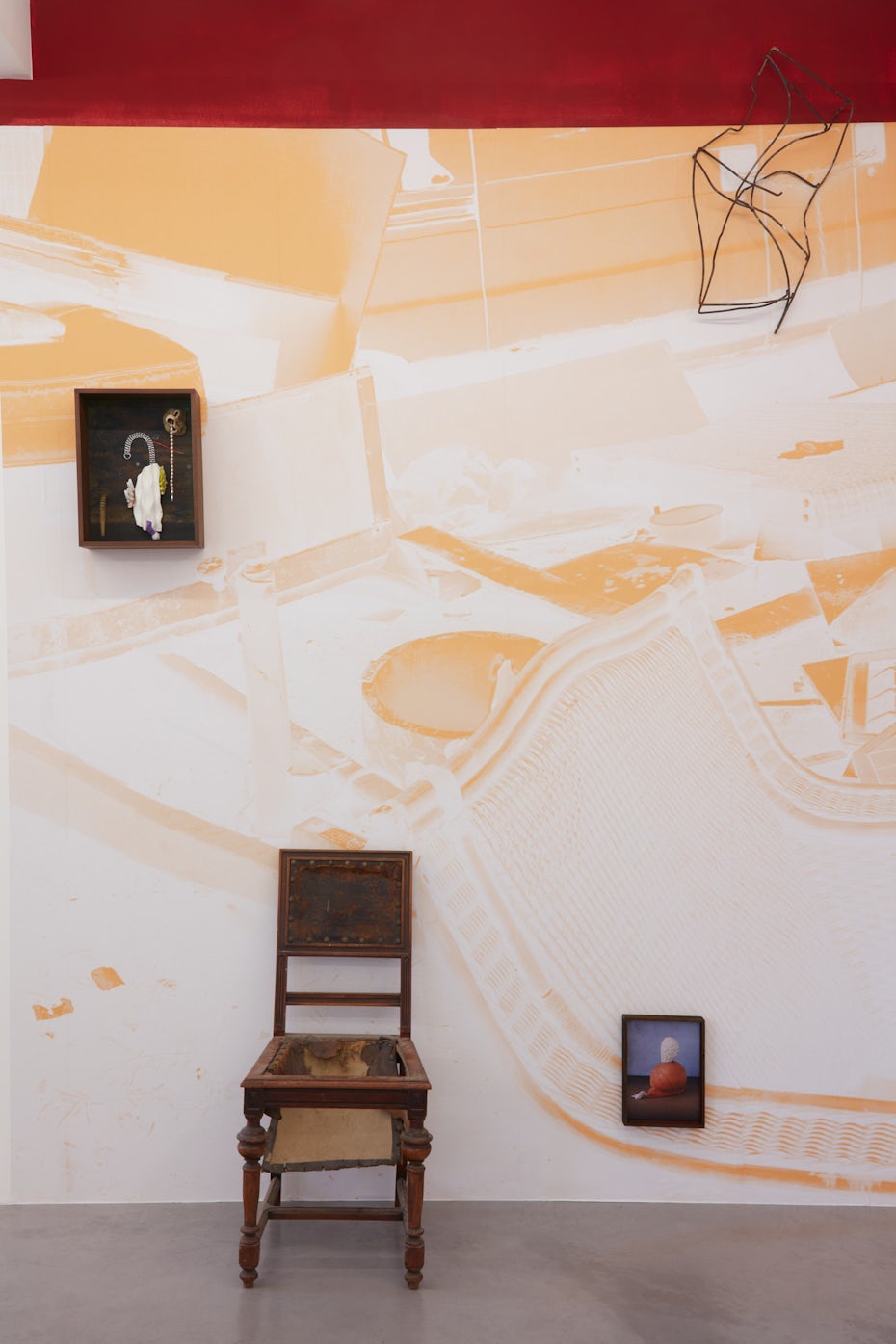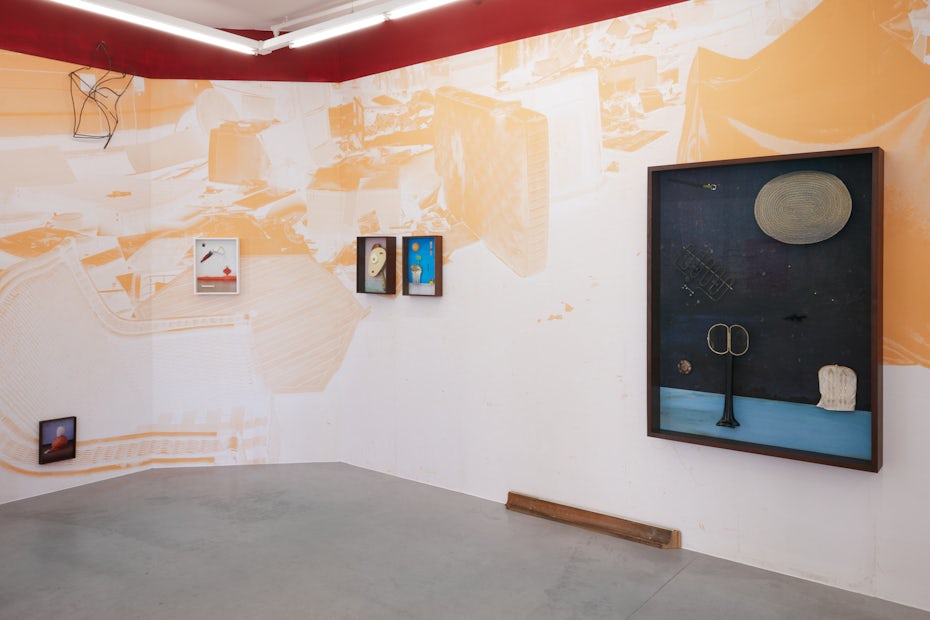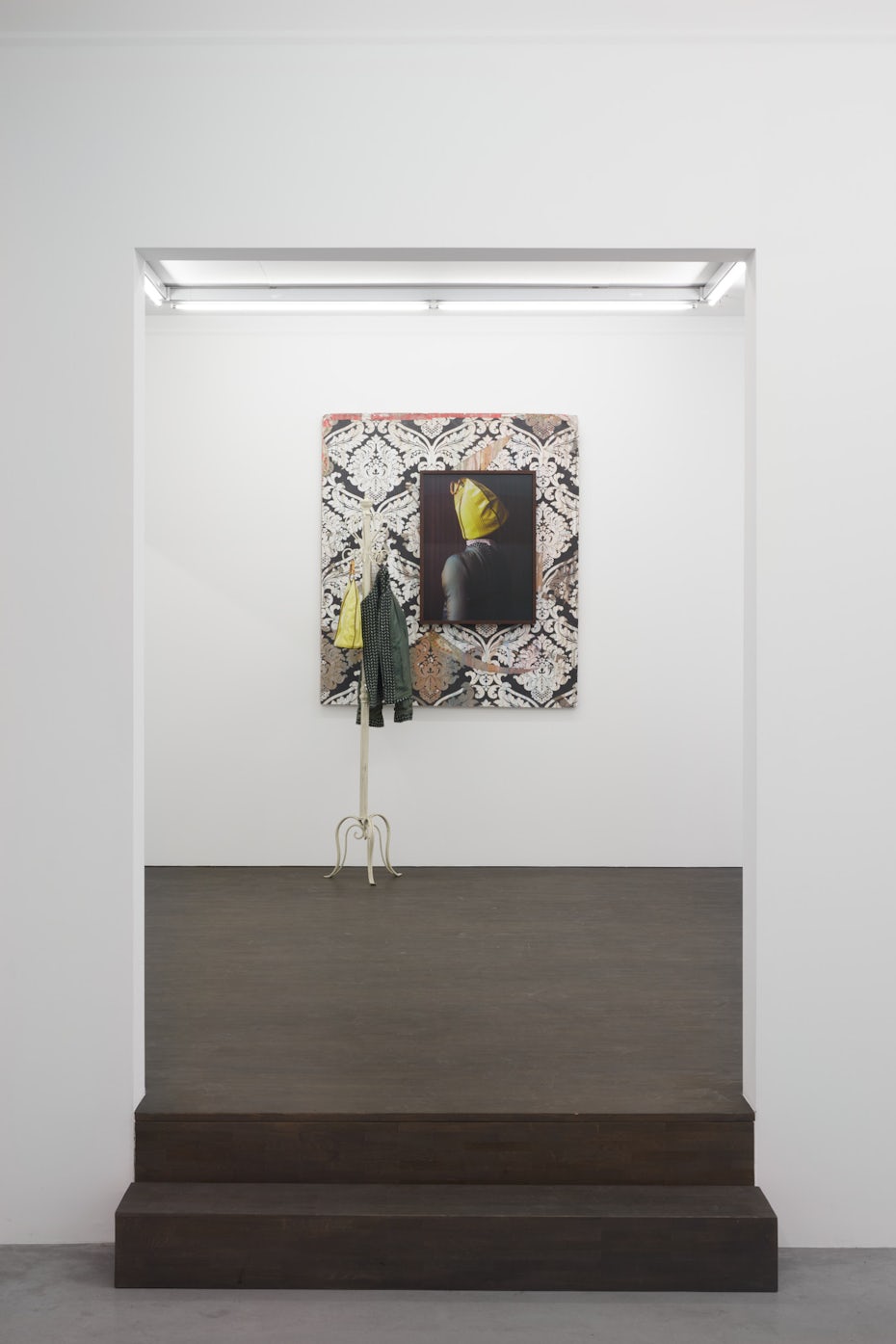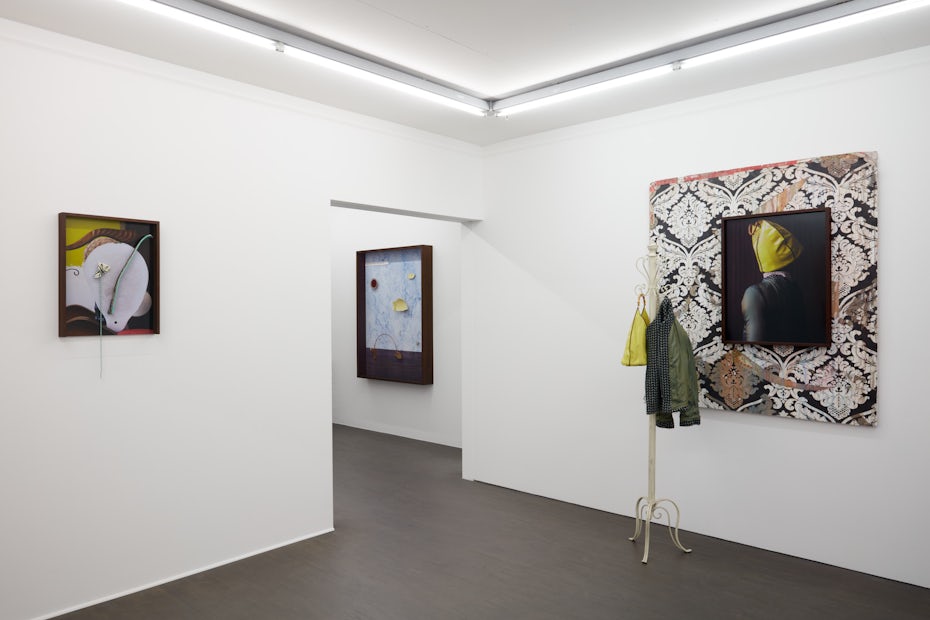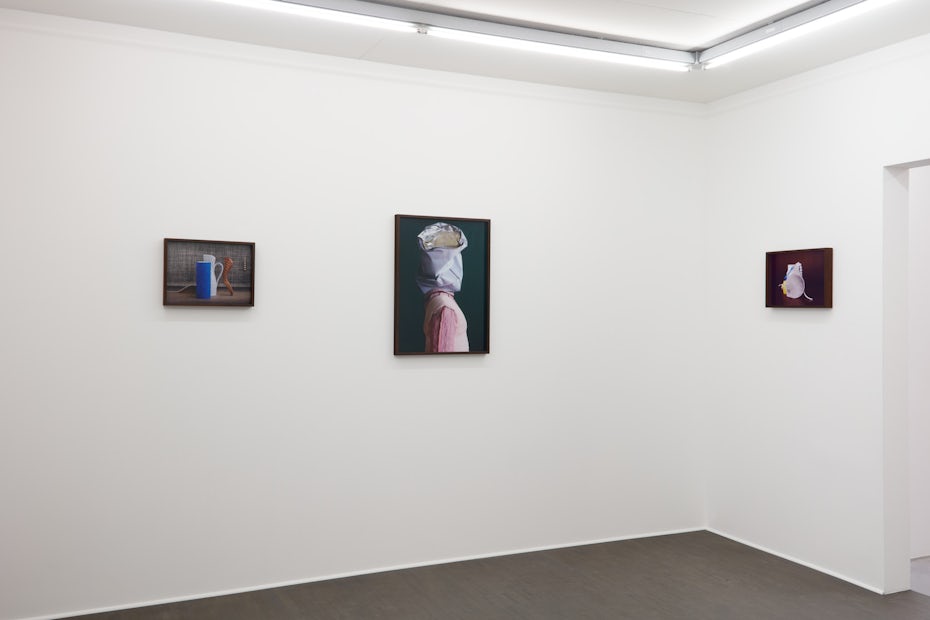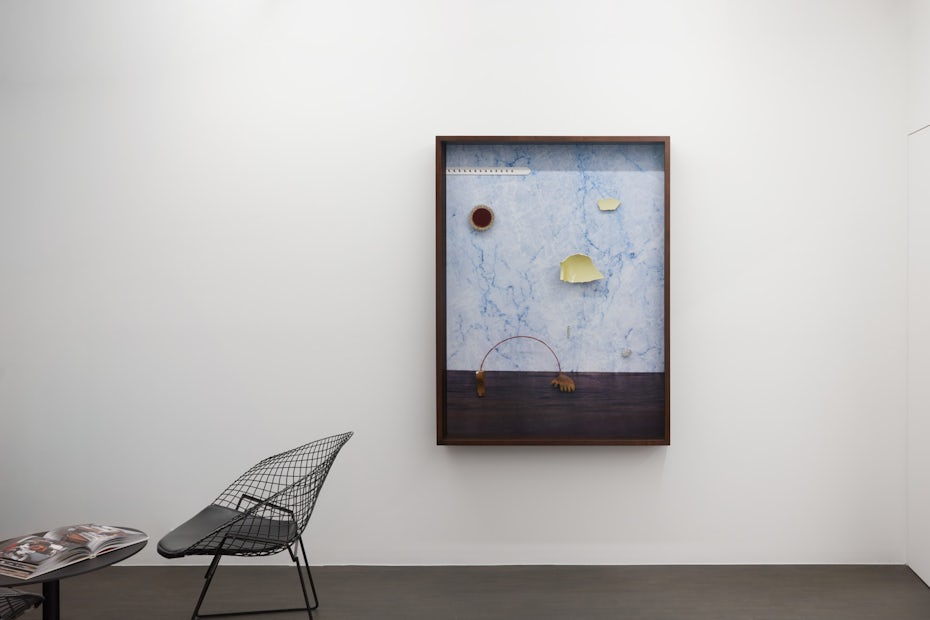Flying Shells
Thorsten Brinkmann
Brussels
05.09 - 30.10.2021
Works
Installation views
Press release
Thorsten Brinkmann ‘Flying Shells’ 5 September – 30 October 2021
The principle of reversing, re-evaluating and reinterpreting things is one of the basic concepts in Thorsten Brinkmanns work. The question of the truth of the world of things arises once again in his new works. Are they what they seem, or are they always something else?
Brushes become cactuses, boards distant horizons, and shells clouds. Nothing is as it seems, yet everything is as it is. In Brinkmanns new work,, the meanings of things turn against themselves. At the same time, however, they are what they are or what they were. Found objects, sediments of our everyday culture, are given new meaning in a surrealistic, romantic and Dadaistic way. Objects seem to question the meaning of truth and value again and again.
Two old boards placed next to each other form a horizon. The deep perspective, the corresponding section, captured with a camera, the colour combination of the boards – together they create a landscape or sea image with an impression of distance. This illusory expanse is combined with found objects that occasionally seem to float above the horizon like ambiguous hallucinations. At other times, they seem to be in the distance even though they are clearly hanging in front of the picture. The colour, the shape, the memory pushes them there. On the one hand, they are only found fragments of some representational quality; on the other hand, they are suddenly rainbows on the horizon. A banal scratch on the charred board becomes the tail of a racing comet here. Ordinarily a seashell in the sea, it becomes a cloud on the board.
Some of the pictures might have a reference to Yves Tanguy, of his mysterious images of the horizon. It is difficult to say what these ‘corporeal’ forms on Tanguy’s horizon are supposed to represent. This ambiguity appears also in Thorsten Brinkmanns works. By simply putting things together and combining them, surprising new meanings arise. The truth is complex, full of contradictions.
These images of longing are also very much in the tradition of romanticism, which tried to romanticise everyday life. You could also call them `Seescapes`, borrowing the meaning from ‘seascapes’ but with the obvious concept of seeing. So, the question arises: is it what we see in it or what it is? A shell is not just a shell; it is also a cloud. Always.
Thorsten Brinkmann (°1971) lives and works in Hamburg.
He studied at the Hochschule für Bildende Künste Hamburg, with Prof. Bernhard Johannes Blume and Prof. Franz Erhard Walther.
His works are represented in renowned collections such as the Museum der Moderne, Salzburg; Hamburger Kunsthall; Kunsthalle zu Kiel; Fotomuseum Winterthur; Gemeente Museum Den Haag; LWL Münster; Museo Nacional de San Carlos; Falckenberg Collection, Hamburg; Hamburger Museum of Modern Art, Hamburg; Landesmuseum für Kunst und Kulturgeschichte, Munster; Kunsthalle Bremerhaven; Städtische Galerie Delmenhorst, Mont Blanc Collection.
